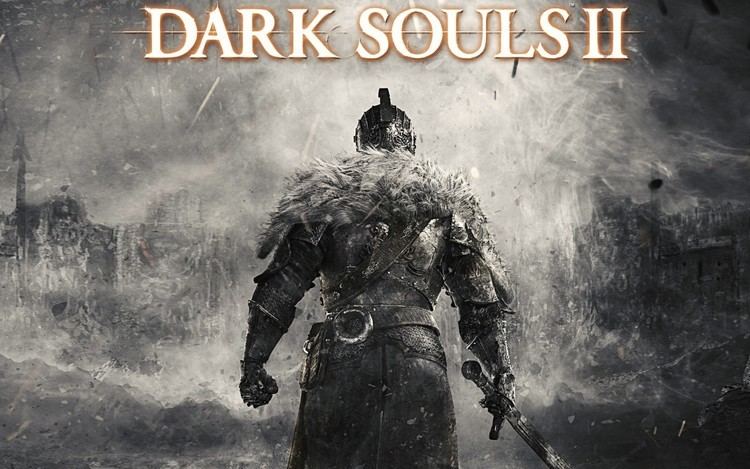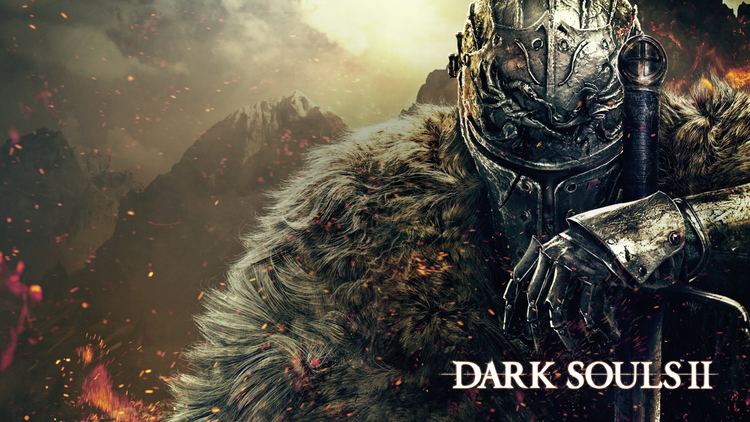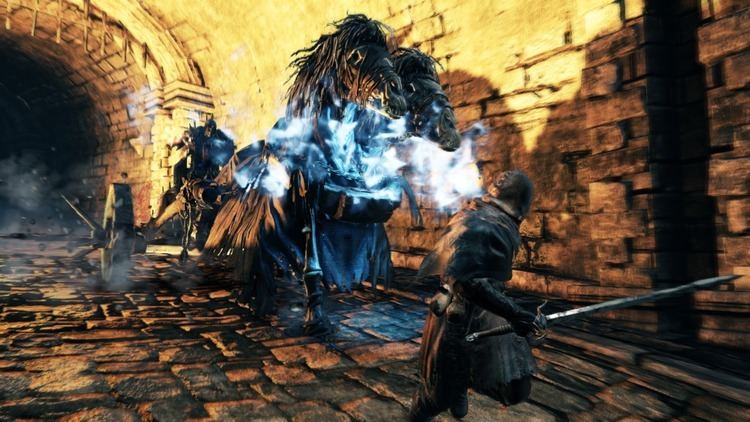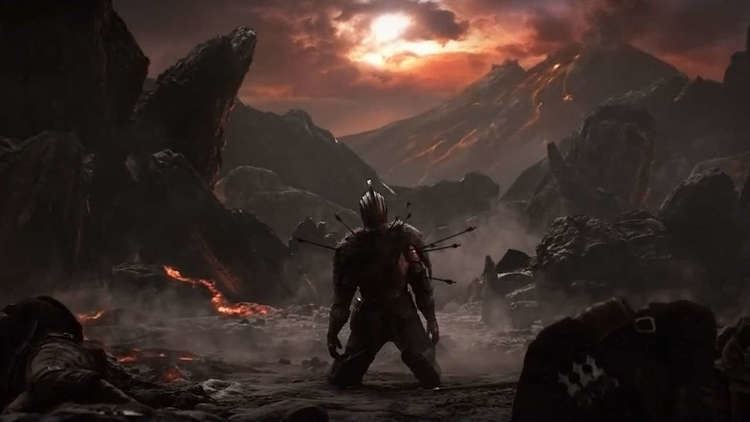9 /10 1 Votes9
9/10 Steam Programmer(s) Yoshitaka Suzuki Initial release date 11 March 2014 | 9/10 GameSpot Producer(s) Masanori Takeuchi Artist(s) Keiichiro Ogawa Designer Naotoshi Zin | |||||||||||||||||||||||||||||||||
 | ||||||||||||||||||||||||||||||||||
Director(s) Tomohiro ShibuyaYui Tanimura Composer(s) Motoi SakurabaYuka Kitamura Nominations The Game Award for Game Of The Year Similar Souls games, FromSoftware games, Open world games | ||||||||||||||||||||||||||||||||||
Dark souls ii trailer vga world premiere 2012
Dark Souls II is an action role-playing video game developed by FromSoftware and published by Bandai Namco Games. The third game in the Souls series, Dark Souls II was released for Microsoft Windows, PlayStation 3, and Xbox 360.
Contents
- Dark souls ii trailer vga world premiere 2012
- Dark souls ii review
- Gameplay
- Plot
- Development and release
- Scholar of the First Sin
- Reception
- References

Although both are set in the same universe, there is no direct story connection between the first Dark Souls and the sequel. The game uses dedicated multiplayer servers. Taking place in the world of Drangleic, the game features both player versus environment (PvE) and player versus player (PvP) play, in addition to having some co-op components. As in the earlier games in the series, it again features challenging gameplay, but with a more powerful graphics engine and more advanced AI system.

After some initial delays, the game was released worldwide in March 2014, with the Microsoft Windows version being released on April 24, 2014. An updated version of the game, Dark Souls II: Scholar of the First Sin, was released in April 2015. The title is a compilation of the original game and its downloadable content, and also encompasses a remastered port of the game for PlayStation 4, Xbox One, and Windows with upgraded graphics, expanded online multiplayer capacity, and other various changes. A sequel, Dark Souls III, was released in 2016.

Dark souls ii review
Gameplay

Dark Souls II retains similar mechanics from its predecessors in the Souls series. Being known for its difficulty, both bosses and standard enemies have the potential to kill the player in only a few hits. Bad play is punished severely by most enemies, opportunities for recovering health are limited, and as in Demon's Souls, each time upon death, the player's maximum health is reduced (to a certain lower limit) until the player expends a rare item to reverse it. The game uses a form of joint currency called "souls", which are used as both experience points for leveling up and also as currency for purchasing items from shops. Upon death, the player's entire collection of souls are dropped; the player can recover their dropped souls by returning to the spot where they died, but if they die before picking them up, the souls are permanently lost.

Multiplayer in Dark Souls II uses the same format as its predecessors; players have the choice between co-operative play in the form of being "summoned" into another player's game world, or player-versus-player through "invading" other worlds. Both forms of multiplayer occur pseudo-randomly, although matchmaking formulas are used to pair characters at similar levels together.
The game allows the game's difficulty to be adjusted by mechanics built into the game. The game designers placed certain items early in the game allowing newer players higher basic damage and defense than they would normally have at that point. For more experienced players, the designers placed higher skill cap items early that do more damage if executed correctly. Other penalties, such as the health reduction on death, can be significantly reduced with certain items. This allows the player to set the game's difficulty based on their experiences with the game, rather than through a menu option.
Similar to other games in the series, Dark Souls II features a New Game Plus mode. The initial replay is named "NG+", with subsequent replays named "NG++" and continuing until "NG+7" is reached. With each replay the player will retain their levels, souls, and most items.
Plot
The story of Dark Souls II begins with a human who has become Undead, cursed to never die and doomed to eventually become a Hollow, a zombie-like being with no memories or purpose. To break the curse, the undead travels to the fallen kingdom of Drangleic and is tasked by the Emerald Herald with obtaining four Great Souls from other powerful undead. Once obtained, the Emerald Herald directs the undead to "Seek the King" in the capital. After fighting through the remains of the royal guards, the player encounters the Queen Nashandra, who reveals that the king failed in his duty and fled his kingdom long ago. She asks the protagonist to slay the king.
Near the end of the Queen's quest, the player learns that the ruin of the kingdom was in fact caused by Nashandra. She came to the king and deceived him into launching an ill-fated invasion across the sea into the lands of the Giants. She coveted their souls and sought to steal their power. Though the raid succeeded in stealing the Giant's unspecified power, the Giants retaliated. Invading Drangleic, the Giants eventually destroyed the kingdom. With his kingdom in ruins, the king discovered Nashandra's true purpose and locked himself inside the Undead Crypt.
In order to confront Nashandra, the player character travels to the keep of Aldia, the King's brother, to obtain the Ashen Mist Heart, an artifact that allows a form of time travel, by accessing the "memories" of corpses. The player must enter the memories of a deceased Giant to defeat the Giant Lord during the invasion and claim his power for their own. Confronting the Emerald Herald one final time, she states that Nashandra is a fragment of Manus, the final boss in the Artorias of the Abyss expansion in Dark Souls. She then asks the protagonist to put Nashandra to rest and to link the fire, temporarily lifting the curse of the Undead at the cost of the player's life.
In Scholar of the First Sin version of the game, the base story changes slightly, notably with the addition of Aldia after the defeat of Nashandra. If the player has completed the three DLC areas and defeated King Vendrick, Aldia attempts to help the protagonist understand that there might be a way out of the endless cycle of death and rebirth. The player is given a choice: they can either link the fire, restarting the Age of Fire, and repeating the cycle; or the player can abscond the throne, resisting the effects of Hollowing and following their own unknown path beyond light or dark.
Development and release
Dark Souls II was announced at the Spike Video Game Awards on December 7, 2012. Hidetaka Miyazaki, who served as director on the two earlier games in the series, Demon's Souls and Dark Souls, acted as a supervisor, while the game was directed by Tomohiro Shibuya and Yui Tanimura.
Dark Souls II features gameplay mechanics similar to its predecessor; Shibuya stated that he had no intention of changing the controls. The game features a whole new world, with many weapons that are used to fight the monsters in the game. Covenants, a feature in the original Dark Souls, that allowed the player to align with different factions, make a reappearance, though easier to understand and more accessible. The game world is roughly the same size as in Dark Souls, though content density is much richer, and gives players more freedom in how to progress, with the beginning of the game more accessible to newcomers. The game retains the challenging gameplay known to the original, as Tanimura explained: "We do not plan on having an Easy Mode since we are creating this game with a thought that challenge and difficulty are core elements of the game."
The development team utilized a more powerful graphics engine for the sequel. New challenges, adding to the series' documented difficulty level, were also added. The game features a more advanced AI system, that allows enemies to react to a wider range of actions by the player.
On September 19, 2013, an announcement regarding the delay of the PC version was made by Tanimura who said the delay was necessary to ensure an optimal version of Dark Souls II on PC.
Bandai Namco Games producer Takeshi Miyazoe originally stated in December 2013 that he did not expect there to be downloadable content (DLC) for Dark Souls II. Despite that, in an interview in January 2014, he said that there is definitely potential for DLC for the game and that fan feedback is key. On June 4, 2014, FromSoftware announced a trilogy of DLC collectively known as "The Lost Crowns". The first of these, titled Crown of the Sunken King, was released on July 22, 2014. The second, Crown of the Old Iron King, was released on August 26, 2014. The final DLC, Crown of the Ivory King, was slated to be released on September 24, 2014, but was delayed until September 30, 2014, due to unknown reasons. It was then released a day early (September 29) on PC, and a day later (October 1) on PS3.
Scholar of the First Sin
On November 25, 2014, Bandai Namco Games announced an updated version of the game, Dark Souls II: Scholar of the First Sin, which was released on April 1, 2015 for PC, PlayStation 3, and Xbox 360, along with PlayStation 4 and Xbox One. On all platforms, the game is a compilation of Dark Souls II and its three DLC campaigns. On PC, PlayStation 4 and Xbox One, Scholar of the First Sin also features remastered visuals with more advanced lighting effects, running at 1080p resolution at 60 frames per second. The re-release also makes changes to the game itself; enemy positions and behaviors have been revised, and the game also supports up to six players in multiplayer scenarios. Its release coincided with patch version 1.10, which was also released for existing versions of the game on February 5, 2015, which included improvements to online play, the addition of the titular Scholar of the First Sin NPC, performance improvements, and adjustments to items and covenants among other changes, but didn't fix a long-standing FPS dependent weapon degradation bug, which was fixed in a patch released in April 2015.
The existing PC version of Dark Souls II received the 1.10 patch at no charge; the remastered Scholar of the First Sin edition must be purchased separately, but is available at a discount to existing Dark Souls II owners. The remastered version uses DirectX 11 instead of 9, and save data from the original version is incompatible with it.
Reception
Dark Souls II received critical acclaim. Aggregating review website Metacritic gave the Xbox 360 version 91/100 based on 30 reviews, the PlayStation 3 version 91/100 based on 69 reviews and the Microsoft Windows version 91/100 based on 36 reviews. Reviews for Dark Souls II praised the atmosphere, and visuals in the game, seeing it as a large improvement over the first two installments in the series, but were polarized over the game's increased difficulty. German magazine M! Games gave it a 90% fresh rating, with their reviewer stating that it took him more than 60 hours to complete. Famitsu reviewed the game with four reviewers giving their opinions, who gave it 9/10/9/9, bringing the total score to 37/40.
IGN's critic Marty Silva gave the game a score of 9/10: "Dark Souls II is a smart, massive, and incredibly rewarding sequel. It’s crammed with deep systems, tense encounters, and enough clever multiplayer and New Game Plus elements to make me want to restart the second I saw the end credits. Not all of the tweaks and additions worked out for the best, the penalty for dying made the game almost unplayable but with such great enemies and levels to fight and explore, Dark Souls II made 60 hours of pain and agony so much fun they flew by in a heartbeat." Daniel Tack of Game Informer gave the game a 9.75 out of 10, stating: "Dark Souls II is an epic adventure from start to finish packed with wondrous environments, imaginative and terrifying foes, and the continual adrenaline-apprehension rush of passing through each fog gate make this title a must-play." Polygon's Phil Kollar also gave it a 9/10, and similarly praised the ambition displayed by the team in creating such a vast RPG universe for the player to explore, the notorious difficulty, and the sense of triumph that comes with eventually defeating the game; he notes that his character died 235 times before completing it.
Despite the almost universal praise, the game was criticized by some reviewers for aspects relating to its unyielding difficulty. In an "alternative take" review, as a newcomer to the series Justin Haywald of GameSpot gave the game a 5/10, claiming that it "too often sacrifices fun, replaces it with tedium, and tries to defend that choice by calling it a challenge." The game was also criticized by the veteran players of the series for being a step backwards from its predecessors. Eric Kain of Forbes described that the flaw of Dark Souls II is that it "fails in almost every way not only to live up to the games that came before it but to find and establish its own identity".
As of March 2014, the game had shipped 1.2 million copies within the United States and Europe; and according to a 2014 Bandai Namco financial report, the game also sold very well in Brazil. As of April 2015, the game has sold over 2.5 million copies worldwide. At the 2014 Golden Joystick Awards, the largest video game award show with over nine million votes cast, Dark Souls II won the 2014 Game of the Year award. At the 2014 National Academy of Video Game Trade Reviewers event show, Dark Souls II was nominated for best game design/franchise. Another game in the series, Dark Souls III, was released in 2016.
